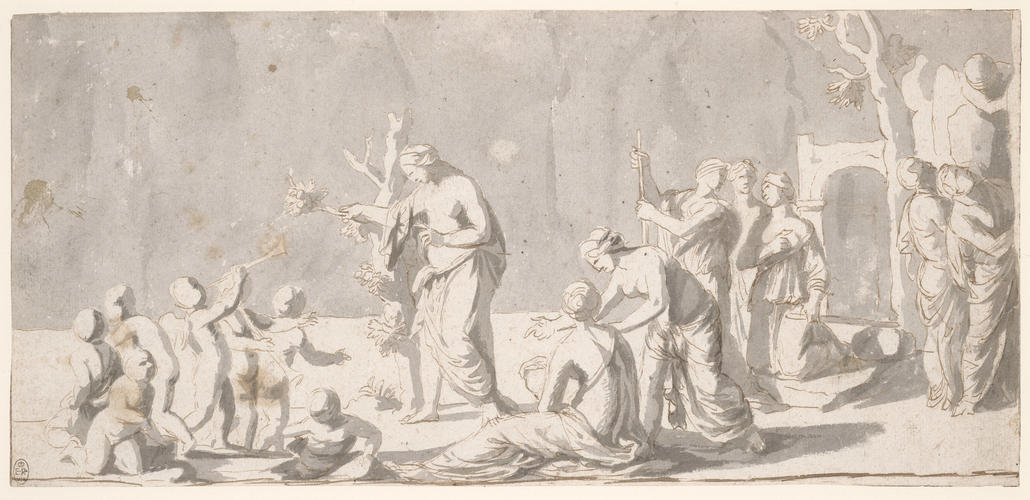Dryope transformed c.1622-23
Traces of graphite underdrawing, pen and brown ink, grey wash, some staining | 15.7 x 33.3 cm (sheet of paper) | RCIN 911941

Nicolas Poussin (1594-1665)
Dryope transformed c.1622-23
-
A drawing made by Poussin for the poet Giovanni Battista Marino in Paris, c.1622-23 (see RCIN 911933 for details).
The nymph Dryope plucked a flower from a lotus tree, unaware that this tree was the nymph Lotis, transformed to escape the pursuit of the god Priapus. For this Dryope was herself transformed, and her last request was that her son Amphissus should be taught that all trees were originally nymphs or goddesses (Ovid, Metamorphoses, IX, 329ff).
Poussin does not depict the moment of Dryope's metamorphosis, but the subsequent education of her son. Presumably Amphissus is one of the children playing at the left, but the wings and trumpets seen in this group are among the puzzling features of the drawing - in particular the figures at the right of two men gazing up at another on top of a wall play no part in the action and are hard to explain.
This is the least satisfactory of the Marino drawings, with its fragmentary composition and lack of narrative clarity. Quite possibly Poussin himself was aware of these shortcomings, for the coarse line drawn along the bottom of the sheet may be an attempt by the artist to tighten up the composition; the sheet has thus been trimmed to an inch narrower than the others in the series.
Provenance
Cardinal Camillo Massimi (1620-1677); from whose heirs bought in 1739, for 300 scudi, by Richard Mead (1673-1754); probably presented to Frederick, Prince of Wales, by 1750.
-
Creator(s)
Acquirer(s)
-
Medium and techniques
Traces of graphite underdrawing, pen and brown ink, grey wash, some staining
Measurements
15.7 x 33.3 cm (sheet of paper)
Object type(s)
Other number(s)
RL 11941Alternative title(s)
Driope Trasformata nel' Arbore







